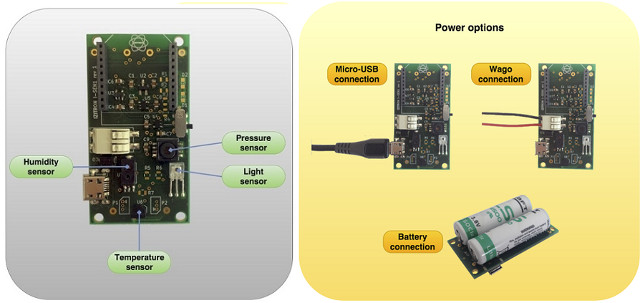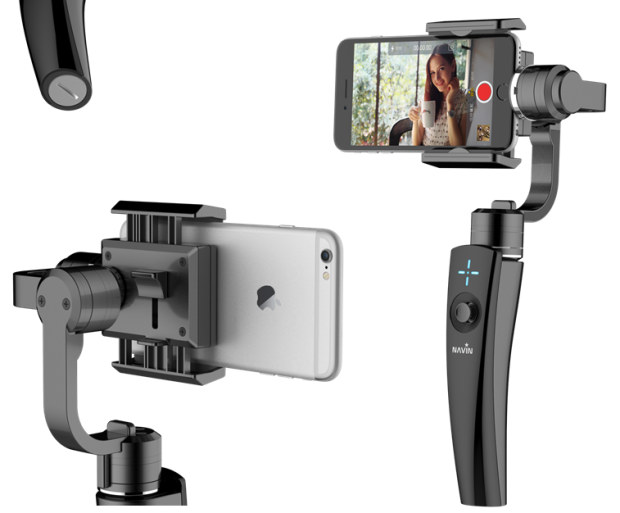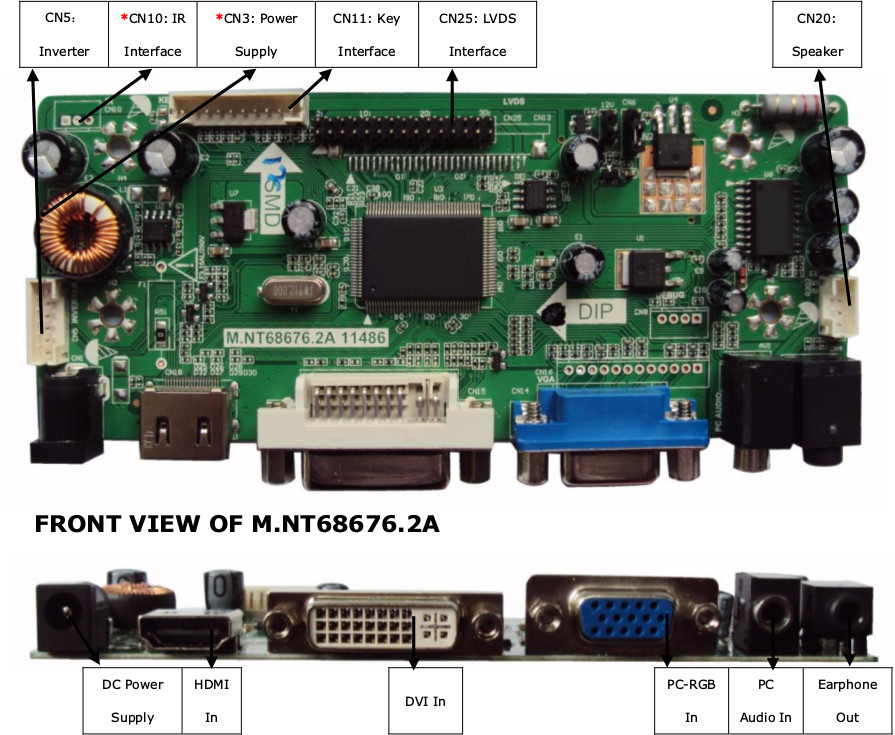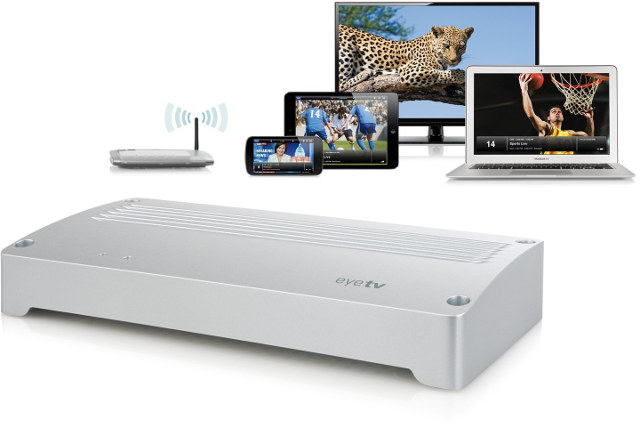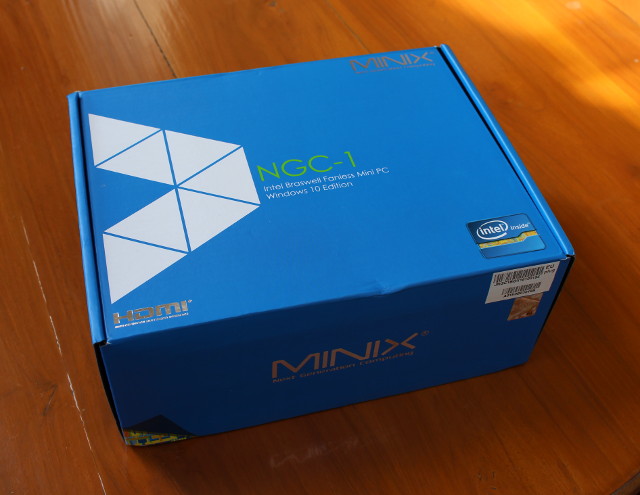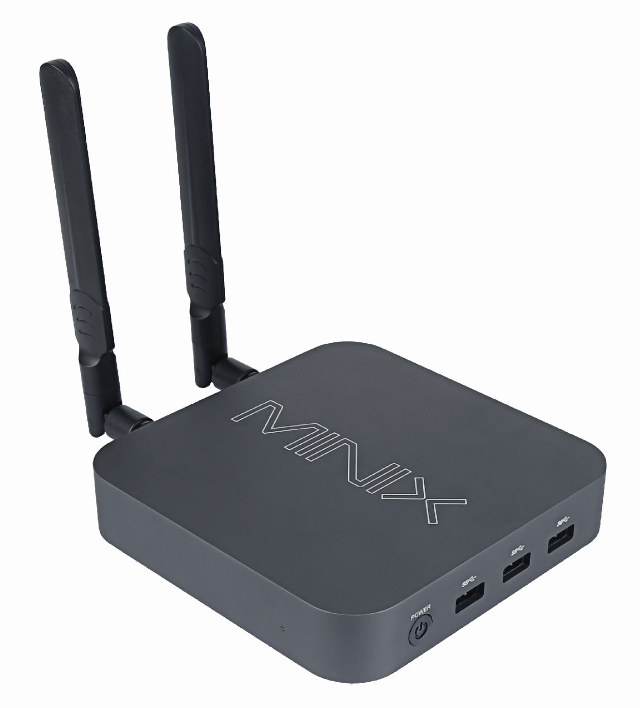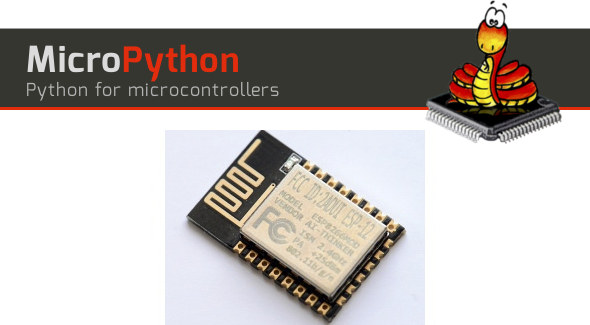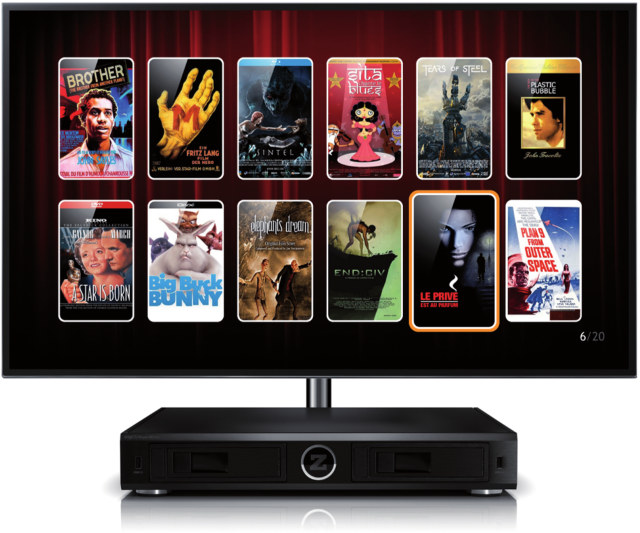Izitron, a start-up based in the South of France, has designed a board with temperature, pressure, humidity and light sensors and a XBee header to provide a way to monitoring environmental variables for weather monitoring, agriculture, industrial applications, and more. I-SEN1 technical specifications: Sensors Temperature – Microchip MCP9700-E/T0; accuracy: ±4°C Accuracy from 0°C to +70°C | -4°C/+6°C Accuracy from -40°C to +150°C; temperature range: -40 to 125 °C Pressure – Infineon KP236N6165; accuracy: 2%; pressure range: 60 kPa to 165 kPa; temperature range: -40 to 125 °C Humidity – Honeywell HIH-5030-001; accuracy: ±3% RH; range: 0 to 100% RH; temperature range: -40 to 85 °C Light – AMS TSL14S-LF; reponsivity: 16 mV/ (uW/cm2); temperature range: 0 to 70 °C Header for XBee RF module Power Supply 5V via micro USB 5 to 12V via Wago terminal block 2x batteries No power management chip Power on/off button Power consumption – Up […]
ProView S3 Affordable 3-Axis Smartphone Stabilizer Helps Shooting Better Videos (Crowdfunding)
Smartphone stabilizers (aka gimbals) for smartphones allow you take much better videos while on the move, as they smooth the shaking that occurs when you walk, run, or bike. Stabilizers are currently available, such as KumbaCam or other white brand stabilizers, are sold for $250 to $400, but Navin, a Taiwanese company, has designed a cheap video stabilizer for smartphones with ProView S3 that starts at $125 + shipping via Indiegogo. ProView S3 3-axis stabilizer can handle larger size smartphones, features orientation sensors, precision motors, and stabilization algorithms to provide smooth video recording. Some of ProView S3 specifications and features include: Adjustable mount from 67mm to 78 mm width Wind resistant thanks to algorithms and mechanical design Connectivity – Bluetooth 4.0 for wireless firmware updates Dual IMU sensors with tilt, roll, and pan motors. Underslung shot- You can take videos upside down too… 4 operational modes – Full Lock (no […]
How to Use Your Old Laptop Screen with Raspberry Pi or Your Computer
After reading an article on Liliputing about using Raspberry Pi Zero with Motorola Lapdock, I decided to look for clones for the device since Motorola Lapdock is now hard to buy at a decent price, if at all, since the product has been discontinued for a while. I did not find anything similar, but instead I came across M.NT68676.2A LCD driver HDMI kit selling for $37.99 on eBay that allows you to re-use your old laptop screen with any development board or computer that comes with HDMI, DVI, or VGA output. The kit is comprised of a monitor control board (M.NT68676.2A), an “inverter” board which depends on your LCD panel model number, a keypad board, an LVDS cable, and a cable to connect all three boards together. M.NT68676.2A monitor control board specifications: Chipset – NT68676 (UFG) Supported Panel – LED/LCD, Single/Dual LVDS (8bit) up to 2048×1152 resolution Video Input “PC-RGB […]
EyeTV NetStream Streams Free-to-Air Digital TV to Any Devices at Home
A few months ago, I wrote about TBS AMD Moi Pro streaming server supporting up to 16 tuners and mostly targeting businesses, but I’ve also found out there are some consumers solutions such as Elgato EyeTV NetStream 4Sat that includes four antenna inputs for your satellite dish (DVB-S2/S), and the ability to stream live TV to any devices, using hardware video transcoding if need be, for example to Android or iOS smartphones. Versions with DVB-T2 and ATSC will soon be available. EyeTV NetStream 4Sat specifications: Tuners 4x satellite inputs: F connector for RG-6/U coaxial satellite cable DVB-S2 / DVB-S Digital Universal LNB: Single, Twin/Dual, Quad or Quattro Unicable Integrated multiswitch DiSEqC 1.0 Connectivity – Gigabit Ethernet USB – 2x USB 2.0 host ports Misc – Reset button, power switch Power Supply – DC 12V 3A Dimensions – 25 x 12.6 x 4.1 cm (suitable for wall-mounting) Weight – 806 grams […]
Unboxing of MINIX NGC-1 Windows 10 Edition mini PC
This morning I’ve received MINIX NGC-1 Intel Braswell fanless mini PC, so I’ve taken a few pictures of the device and its accessories, before starting testing the performance and reliability of this low power computer. Contrary to the black, gray and green packages I’ve come across for their Android TV box, MINIX has gone blue with their latest Intel mini PC’s package. The product announcements mentioned both Windows 10 and Ubuntu support, and I’ve received the Windows 10 Edition, which hopefully means there will also be a Ubuntu edition. Beside the mini PC, the package includes two external WiFi antenna, an HDMI cable, a 12V/3A power supply and corresponding power cord, as well as a multi-language setup guide, and MINIX product brochure. The power supply should work anywhere in the world as it takes 100-240V/1A input @ 50 or 60 Hz. NGC-1 is very similar to the one used for […]
MINIX NGC-1 Braswell Mini PC Runs Windows 10 or Ubuntu
MINIX showcased some unnamed Braswell mini PCs at IFA 2015 last September, but since then the company has been pretty quiet about their new Intel based mini PCs. The good news is that MINIX NGC-1 will be launched in about two weeks with an Intel Celeron N3150 quad core “Braswell” processor coupled with 4GB RAM, and 128GB M.2 SSD, and beside running Windows 10 64-bit, it will also support Ubuntu. MINIX NGC-1 specifications: SoC – Intel Celeron N3150 quad-core processor @ 1.6 GHz / 2.08 GHz (Turbo) with 2MB L2 cache, and Intel HD graphics with 12EU (4W SDP / 6W TDP) System Memory – 4GB DDR3L Storage – 128 M.2 SSD Video Output – HDMI 1.4 up to 4K @ 30 Hz, and mini DisplayPort Audio I/O – HDMI, 3.5mm stereo jack (microphone + headphone), and optical S/PDIF Connectivity – Gigabit Ethernet, 802.11ac WiFi and Bluetooth 4.2 with two […]
Bringing a Better Port of MicroPython to ESP8266 (Crowdfunding)
MicroPython is an lightweight implementation of Python 3 that runs on ARM Cortex-M micro-controllers such as STM32 or Texas Instruments CC3200, and since ESP8266 is so popular, work has started to port MicroPython on the Tensilica Xtensa LX106 based WiFi SoC. The current ESP8266 port comes with some API callss specific to ESP8266, but is quite basic, uses the execution model provided by Espressif, requiring callbacks to process WiFi requests, and doesn’t include support for many of the chip’s interface such as SPI, nor support WiFi fully. That’s why Damien George, the project lead, has launched a Kickstarter campaign to help fund development of the port, aiming to raise at least 6000 GBP (~$8,500 US). The goal is to develop “proper” Berkeley sockets for MicroPython on the ESP8266, in order to provide a true Python socket API to make development easier, optimize RAM usage, and implement the missing parts on […]
Zappiti Player 4K Duo UHD Media Player Supports Two 3.5″ Hard Drives for Up to 16TB Video Storage
If you are the kind of person who mostly likes to watch online videos, Zappiti’s media players won’t have much to offer over cheaper alternatives, but if you have a large library of videos, either downloads or your own Blu-Ray rips, and would like to watch your movies both at home or on the go, Zappiti Player 4K Duo media player may fulfill your needs thanks to its two 3.5″ SATA bays providing up to 16TB storage, and a RealTek RTD1195 dual core processor supporting 1080p60 and 4K30 video playback. Zappiti Player 4K Duo specifications: SoC – Realtek RTD1195 dual core ARM Cortex A7 processor @ 1.1 GHz with Mali-400MP2 GPU System Memory – N/A Storage 5 GB internal memory (I assume available space out of a 8GB NAND flash) 2x SATA Bay with 3.5″ hard drive up to 8TB each formatted with FAT16/FAT32, EXT2/EXT3, NTFS, or Mac OS enhanced […]


